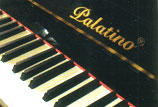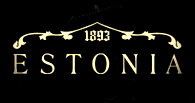Four things every new and used piano needs...
1) Action Regulation: Pianos have approximately 12,000 parts, most of which are moving parts - parts that must move effortlessly for decades free from their neighboring parts. The tolerances of some movements can be less than 1/1000th of an inch! Most of these parts are made of wood, and we all know what time, humidity and/or dryness does to wood. That said, it's amazing pianos even work at all, let alone for decades under seemingly impossible circumstances. Every NEW piano (there are NO exceptions) needs to be regulated before delivery. So it's safe to say that used pianos need it that much more.
2) Tuning: This is the most obvious one. Tuning involves turning the tuning pins to achieve the desired tone. It does not necessarily involve any other parts of the piano, unless the tuner encounters problems tuning the piano which lead him/her to other repairs.
3) Voicing: This is a highly technical art which only a fraction of all technicians attempt and one at which even fewer excel. Voicing is the art of altering the texture of the hammers to change the tone the the hammer produces. Hammers can be softened, hardened and reshaped. Sometimes, only a few notes within a piano may need voicing adjustments. Sometimes, the whole piano is too "bright" (even brittle sounding) or too mellow (muffled sounding), so voicing techniques are applied to slightly or significantly alter the tone.
4) Cabinet Work: From simply touching up a cabinet to a complete refinishing job, high-quality cabinet restoration work is challenging and requires excellent equipment, a refinishing/buffing booth and seasoned craftsmen. In other words -- it's expensive! Refinishers who are versed in the art of piano refinishing and touch up average $100/hr. When we provide buffing or touch up services to those who purchased their pianos privately, these rates apply -- and that doesn't include the $500+ in extra moves to and from our shop. Considering that the complete buffing of even a NEW grand piano can often take the better part of a day's work, it's easy to see how quickly these charges can add up. This work cannot be done in homes due to the fumes from the materials and the airborne debris from the pumice used on the buffing wheel.
It is common for Cordogan's to spend 1-2 days on NEW pianos to complete the above list (used can be much more!), but that ensures our customers that each piano plays, sounds and looks as good as it can. Adding these services up at retail, it can be up to $1500 of technical work -- or more that goes into our pianos. For our used pianos that are in the $1000-2000 range, yes, that means you're really not paying much for the actual piano at all. That's why the price range of used pianos on the open market can be "free on up"
For a more detailed list,
click here for Cordogan's
Piano Restoration Checklist!









